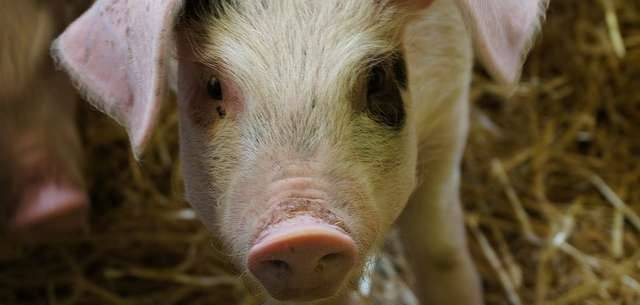
In the Union, the vast majority of pigs are reared, kept and then slaughtered for their meat as part of an intensive production system which poses many problems, particularly in terms of animal welfare and pollution.
The pig sector is of undoubted importance for the Spanish economy, especially in the rural area, to which most of the 5,002 municipalities with less than 1,000 inhabitants belong. It represents 14% of final agricultural production and 39% of final animal production.
Indeed, meat production reached around 5 million tonnes in 2020 and more than 56.4 million animals slaughtered. These record figures place Spain fourth in the world (behind China, the United States and Germany) for meat production and third for the number of animals slaughtered, and second among producers in the world. European environment (with 21.8% of production).
Its value chain includes many direct activities related to animal production and feed manufacturing (pig companies), processing (pigmeat industry) and wholesale and retail marketing of meat and of manufactured products.
Production and structure of the sector in Spain
Between 2007 and 2020, Spain recorded a 46% increase in pig production and a 26% increase in the number of animals in almost the entire territory. This increase coincided with a drop in national consumption of 16.7%, which fell from 81.9% on production in 2007 to 46.7% in 2020, although household consumption during the lockdown increased. this year, thus offsetting the drop in consumption in the restaurant sector.
The foreign market played a key role in this growth:
- On the one hand, exports to European territory have increased by 55% since 2008, mainly to France (23%), Italy (16%) and Portugal (13%), representing 23.6% of the production in 2020.
- On the other hand, exports outside Europe have seen a considerable increase during the period, reaching 35.7% of production in 2020. A major part of these exports is mainly destined for China. It represented 75% of total pork exports to third countries in 2020, against 0.23% in 2008.

Spanish exports outside the European Union in 2020. Ministry of Agriculture, Fisheries and Food (MAPA).
It should be noted that, despite its increasing use, the term macrograin "does not appear in any of the provisions in force in the Spanish legal order or in the European Union".
We can refer to intensive breeding or industrial breeding, understood as that which relies on the intensification of production factors (equipment, installation) to maximize production and minimize costs. It is also characterized by a high density of animals and the control of aspects such as feeding or temperature to speed up breeding times, taking advantage of the advantages of a comprehensive system both in the supply chain and in marketing.
The total number of pig farms in Spain has decreased by 11% since 2007 due to the collapse of small farms, -51% of small farms and -25% of Group 1 farms. However, the increase of the larger ones , represented by groups 2 (25%) and 3 (49%), helped stimulate pig production to reach 5,024,000 tonnes in 2020.
In that year, 88,437 farms were counted, mainly in Galicia (34% of the national total), Extremadura (15%), Andalusia (14%) and Castile and León (10%). These regions, with the exception of Andalusia, are characterized by an increased weight of intensive production facilities, which, in the case of Galicia, reach almost all.
Consideration of animal welfare
The physical and mental well-being of pigs is compromised by periods of cage confinement, monotonous environments and mutilations. Living in an environment devoid of stimulation prevents them from expressing their natural exploratory (burrowing) behavior, which can cause frustration and encourage dangerous behavior. They also suffer during transport and pre-slaughter operations, which can be a source of intense stress. European law still allows sows to be kept in individual pens between weaning a litter and the end of the fourth week of the following gestation. Just before farrowing, the sows are moved to a farrowing pen, which severely limits their movements. Breeding sows generally have two litters of 10 to 12 piglets per year. Piglet mortality before weaning varies greatly between farms and can range from 5% to 35%.
Although European regulations prohibit routine mutilation, in the main pig-producing Member States most piglets are routinely subjected to violent practices. One of these practices is partial tail sectioning, which is believed to prevent tail biting (abnormal behavior that results, among other things, from an insufficiently stimulating environment). Another is the castration of male piglets to avoid boar odor, which is the unpleasant smell or taste that pork meat (from adult males) can take on when cooked. Systematic tail removal has been banned in the Union since 1994, but the implementation and enforcement of this ban still encounter serious problems in most Member States. In addition, there are serious shortcomings in the provision of sufficient enrichment. Hearings held by the Commission in Germany, the Netherlands, Italy, Spain and Denmark between 2016 and 2018 show that 95% to 100% of pigs still undergo tail docking. Only two Member States actually comply with the ban (Sweden and Finland)
Environmental impact of pig production
Until the 1980s, the environmental impact of intensive livestock farming was not sufficiently taken into account. The major challenge for the pig production sector lies in the need to find a balance between reducing its negative effects on the environment and meeting the increasing demands for welfare, while preserving the profitability of the sector. The intensive production of pigmeat is linked to environmental issues mainly concerning water and air pollution. The quality and composition of the large amounts of manure produced, and the way they are handled and disposed of, to a large extent determine the emission levels of harmful elements. At farm level, the negative environmental consequences of intensive pig farming include: pollution of surface water and groundwater by nitrates (NO3 -) and ammonium (NH4 +); eutrophication (excessive growth of algae in aquatic ecosystems) caused by releases of nitrogen (N) and phosphorus (P); acidification caused mainly by ammonia (NH3) emissions; air pollution, due in particular to ammonia and nitrous oxide (N2O); greenhouse gas (GHG) emissions: mainly ammonia and nitrous oxide (N2O)
The environmental impact associated with the pig sector affects both intensive and extensive farms, although the concentration of animals in the former makes manure production necessary for a specific leachate management system (Leaching refers in the field chemistry, pharmacy or soil sciences, all techniques for extracting soluble products by a solvent, and in particular by water circulating in the soil or in a substrate containing toxic products - 1) and waste products.
The following pollutants are highlighted:
• Ammonia emissions : the introduction of emission control techniques in the application of fertilizers in the field, the improvement of animal feed and management techniques made it possible to reduce these emissions by 10% in 2012 compared to 1990. From 2013, there is an increase associated with the growth of huts and an increase in the use of organic (manure) and inorganic fertilizers. However, thanks to the reduction of inorganic nitrogen fertilizers, they stood in 2019 at + 1% compared to 1990.
• Nitrates emissions: the livestock sector was responsible in 2019 for 0.8% of these emissions, which have in any case decreased by -49% since 1990.
• Greenhouse gas emissions: 9.1% of these emissions come from this sector in 2020, an increase of 0.8% compared to 2019 due to manure management and enteric fermentation.
• Biosecurity: the fight against antibiotic resistance is a European priority, governed by Regulation (EU) No. 2016/429 of the European Parliament and of the Council of March 9, 2016 . In this regard, MAPA has implemented a national strategic plan for biosecurity in pig farms (2015 and 2016).
These aspects are governed by Royal Decree 306/2020 of 11 February, which establishes basic rules for the organization of intensive pig farms, and modifies the basic regulations for the development of extensive pig farms. Among its novelties, we can mention:
- the establishment of minimum biosecurity, hygiene, animal welfare and health conditions (Article 4);
- manure management rules (Article 9);
- the need to adopt best available techniques to reduce emissions (Articles 10 and 11);
- and the obligation to adopt, from 1 January 2022, an integrated management system for livestock farms (EMIS) (fourth final provision), including a waste management plan, an environmental management plan and the fight against climate change and a biosecurity plan.
In conclusion :
Pig production in Spain far exceeds national consumption, moving largely towards export, mainly to third countries, which can lead to uncertainty related to the situation of certain international markets (such as China).
In addition, the increase in production recorded in recent years is based on an increase in the number of large farms, so-called intensive breeding being stimulated.
All this gives rise to a lively debate on the socio-economic and environmental impact of the largest pig installations in rural areas. Environmental and livestock associations warn of the environmental impact and the questionable local advantages of highly technological farms.
Royal Decree 306/2020 regulates the most controversial aspects concerning the management of these facilities. Their compliance will depend on the reduction of environmental impacts as well as the reactions of Spanish public opinion to the pig-intensive farms in the country.
1 - Wikipedia
Sources:
- European Parliament - Study on the procine meat sector in the European Union.
- Mª Victoria Mestre Martinez - Senior Technician Environment and Sustainable Development, Economic and Social Council (Spain)

Posted on 2021-10-05 10:00








Comments